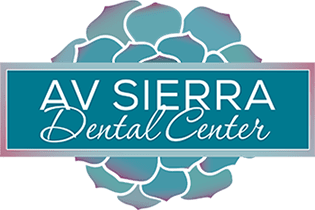Dental Travel Tips

Summer’s approaching fast, and with it comes road trips, family vacations, and travel plans. We’re all for travel and vacations, but just because you’re going on vacation doesn’t mean you can take a break from oral hygiene. We’re not saying you have to pack an electric toothbrush or a Waterpik® if you’re going camping for the weekend, but you should make an appropriate plan to continue caring for your teeth and gums… or else you could end up with an unpleasant souvenir from your trip: a cavity. Make it easy for yourself with travel supplies. Packing for a trip, whether a road trip or an overseas flight, is always a pain. You never have enough room for everything you want to bring, or you forget something you definitely need (like a toothbrush). Prepare ahead by having a small case or bag with all the travel necessities—toothbrush, toothpaste, floss or picks, and mouth rinse, for starters. Travel sizes aren’t the most economical way to purchase supplies, but they are convenient and ensure you can breeze through security checks at the airport. [spacer size=”20″] Ditch the toothbrush case. Sure, it might not feel good to think about your toothbrush jostling up against shampoo, soap, deodorant, and all the other items you’ve got in your toiletries bag… but it’s not as bad as sealing a wet toothbrush inside a plastic case that doubles as a bacteria breeding ground. You can always wash your toothbrush with hot water when you get where you’re going. [spacer size=”20″] Carry on your supplies. A quick brush, floss, and rinse can do wonders to help you feel refreshed on a long flight or when you get to the airport—and going carry-on will save you headaches if your luggage is delayed. But don’t obsess about it. You’ll be able to get new replacements at a drugstore almost anywhere you go. [spacer size=”20″] Stick to your routine. When traveling, it’s all too easy to get caught up in sightseeing, hiking, and dining out. In fact, that may be the entire point of some vacations. But oral hygiene is one of those things where the routine matters. Remember to brush at night before bed, in the morning after waking up, and to floss at least once a day. [spacer size=”20″] If in doubt, use bottled water. In foreign countries, especially ones that are off the beaten path, play it safe by using bottled water for your oral hygiene routine. As a rule of thumb, if you’re going to avoid drinking tap water, then avoid using it for brushing. Thankfully, in these places, most hotels will provide a complimentary bottle or two every day. [spacer size=”20″] Stick with healthy snacks. When you’re on the go, whether in the car or out sightseeing, there’s a temptation to pick up junky snacks for a quick energy boost. Avoid doing so if you can. Not only is the energy from a candy bar or bottle of soda short-lived, sugary snacks and drinks give bacteria plenty of fuel to cause tooth decay. If you do give into temptation, you’ve packed your toothbrush in carry-on for a reason. Use it. And if you like to chew gum on a plane, stick with sugar-free. [spacer size=”20″] Finally, if you’re planning a long trip, consider a check-up before you go. When your departure date gets close, it’s easy to put off routine tasks until after your vacation. If one of those tasks is your dental checkup, reconsider. If you’ve got a nagging concern, like an achy tooth, get it taken care of before your vacation. The last thing anyone wants is a full-blown toothache ruining your vacation! [spacer size=”20″] We hope you’re all set to enjoy a great summer vacation, but don’t forget to take care of your teeth when you’re traveling. If you need to set an appointment for a check-up before you go, or if your schedule is just a little bit simpler during the summer months, call or visit our website to make your next appointment today.
The Gift of Giving

As the holiday season continues in full effect, a lot of people get in the mood for giving. With Thanksgiving just over, you probably ate so much that you envy cows and their four stomachs. But before you delve into eggnog, cookies, prime rib, and fruitcake (Well, we aren’t sure anyone has eaten fruitcake in the last two decades, but it’s synonymous with the holidays, so…), you should consider donating to a charity. With so many charities to choose from, it can be hard to make a decision on what cause you want to be apart of. Below are a few charities that focus on dental needs. National Children’s Oral Health Foundation (NCOHF) – Through various programs and initiatives, NCOHF aims to helps children of all ages by educating them on preventative oral care, as well as providing oral health products to those in need. Since the NCOHF gets funding from bigger partnerships, all donations made go directly to the programs and not administrative or fundraising efforts. Dental Lifeline Network (DLN) – DLN provides the less fortunate with dental services by organizing the logistics for volunteer dentist and labs. DLN has an agreement with dentist that they will do at least one to two cases per year. While most low-income dental clinics provide only basic or emergency services, DLN is proud to have dentist who perform extensive dentistry for low-income and disabled/elderly people. Global Dental Relief (GDR) – GDR gives children in impoverished areas around the world much-needed oral care, and also educates them on how to properly to take care of their teeth. They organize multiple relief trips a year to Nepal, India, Guatemala, Kenya and Cambodia. If these charities aren’t tugging on your (golden) heart strings, check out Just Give to find one that may persuade you to donate or volunteer. Just Give allows you to search for local charities — that way you know the money or time you’re donating is going back into your community. Additionally if you don’t know much about a charity, visit Charity Navigator. Charity Navigator rates non-profit organizations on financial efficiency and transparency. Before donating to a charity you like, be sure to check out if the organization is of high quality or not. As we continue to enjoy our holiday season with family, friends, and loved ones, please take the time to look into a charity that resonates with you. It only takes a little bit of your time and effort to make someone else’s year.
Tips for Teaching Your Kids to Floss
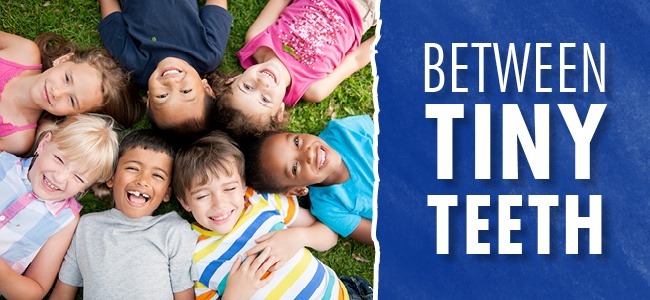
Even though baby’s first teeth are temporary, getting an early start on excellent dental hygiene practices, including both brushing and flossing, is essential to a lifetime of good oral health. Dental decay is one of the most common childhood diseases. According to the Centers for Disease Control and Prevention (CDC), 42% of children ages 2 to 11 have had cavities in baby teeth, and 21% of those ages 6 to 11 have had cavities in permanent teeth. Tooth decay not only poses a threat to tiny teeth, it can negatively affect a child’s whole health, as well as how they feel about themselves. One of the longest-lasting benefits of a healthy smile during childhood is the foundation for a healthy self-image. Start Early Brushing You should begin cleaning a baby’s gums after each feeding with gauze or a soft cloth starting immediately after birth. As soon as the baby teeth begin to erupt, you can use a soft-bristled child’s toothbrush to clean your toddler’s teeth. Continue brushing for them until they have the dexterity to take over (approximately around 6 years old). Flossing Flossing is difficult for small, untrained hands. Your child doesn’t have to begin brushing right away, but once their tooth surfaces are almost touching, plaque and food begin to settle in between teeth, which can lead to gum disease and tooth decay. At this point, they should begin learning to floss and doing so at least once a day. Teaching your child to floss can be tricky. The following steps will help you get them off to an easy start. Choose soft, flavored floss that’s gentle on your child’s gums and tastes good. Measure out a length of floss that runs from your fingers to your elbow. Wrap the floss around your child’s fingers as you would your own when flossing, but make sure it isn’t so tight that it cuts off circulation or causes any discomfort. Gently guide your children’s fingers, and show them how to glide the floss between the teeth. Show them how to make the floss into a C shape and curve it carefully beneath the gum line. Make sure they shift the floss to the next finger between each tooth so that they use fresh floss in each space. At first flossing may be difficult and even frustrating for your little one. They may not like wrapping the string around their fingers, or they may just find changing the wrap of the floss too difficult. Fortunately, there are a wide variety of child-friendly floss sticks available in different colors and flavors. They come in packs of 50 to 100, giving your little one room for error. Make sure they dispose of each floss stick after use. If your child is having an extra difficult time learning to floss, or if they have braces, consider trying the Waterpik Water Flosser for Kids. It’s made with a simple design that makes flossing easy for children over the age of 6. It is child safe and designed for small hands, so that your child’s frustration will be alleviated and their teeth will get cleaned properly. As your children develop, they will be able to execute flossing with ease and can decide whether to continue using their flossing stick or a Waterpik, or whether to take the more traditional route. For more information and help educating your child on the importance of their oral hygiene practices, call us today. We prepare you with information and instructions on how to clean your child’s teeth, as well as how to teach your child to clean their own teeth — or we can teach them with you.
Manual vs. Electric: The Battle for Best Brush
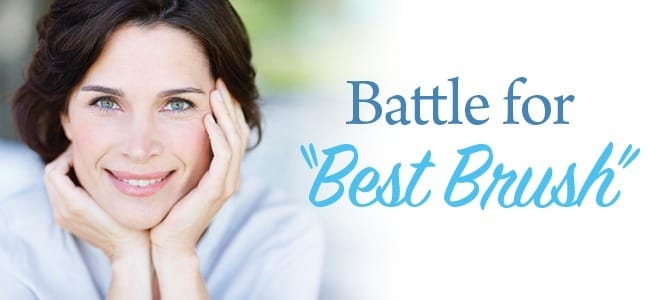
Once every three or four months, you inevitably find yourself standing in the oral hygiene aisle at the grocery store scanning rows and rows of an endless variety of toothbrushes. They come in all shapes, sizes, and colors — and some of them even come with small motors. But how do you know which one is the best for you or your children? The Basics There are some basics you should look for when purchasing a new brush: The handle of the toothbrush should be a length and shape that best allows you to hold and maneuver it as you brush. The head of the toothbrush should be able to easily access all of the surfaces of your teeth. A half inch wide and one inch tall works best for most adults. Toothbrushes come with bristles that are categorized as hard, medium, and soft. Soft is preferable for most people; medium- and hard-bristled brushes can cause damage to tooth enamel. Choose a brush with American Dental Association-approved nylon bristles. Manual or Electric Electric toothbrushes have become increasingly popular over the last several years. They come in all shapes and sizes, and they are suited for both children and adults. But are they more effective than manually brushing your teeth with a traditional brush? The American Dental Association (ADA) has addressed this topic in multiple news releases, saying that manual brushes can indeed be as effective as electric. People using manual brushes who have excellent oral hygiene practices can prevent tooth decay as well as those who use electric. Electric toothbrushes can be very helpful for people who have difficulty adequately brushing. Individuals who suffer from a disability or arthritis, as well as children just learning to brush, stand to benefit from using a suitable electric brush. Manual vs. Electric Both manual and electric toothbrushes have their benefits and their drawbacks. This is how they stack up next to each other. Benefits of the Manual Toothbrush Teeth can be adequately cleaned after only two minutes of brushing. Toothbrushes come in a large variety of sizes, shapes, and colors, so you can find the one that works perfectly for you and each of your family members, including your children. Some children’s brushes come with their favorite characters on them, making them extra appealing and fun to brush with. Low maintenance and travel friendly, manual toothbrushes don’t require batteries or electricity for recharging, and you can just pop them in your travel pack or purse when you are on the go. Manual toothbrushes are low cost or free (with some dental visits). Benefits of the Electric Toothbrush There’s little work with a lot of payoff. With very little effort, these toothbrushes thoroughly clean your teeth. Many electric toothbrushes come with a timer so you don’t even have to pay attention to the clock — perfect for those groggy mornings. These brushes are child friendly and tend to alleviate the battle parents typically face when trying to get their children to brush their teeth. Oftentimes children even look forward to the task. These brushes also come with fun characters printed on them. Disadvantages of the Manual Toothbrush Using a manual toothbrush requires more effort and attention than when using an electric toothbrush. Disadvantages of the Electric Toothbrush These brushes are more expensive than the manual alternative. Electric brushes are higher maintenance as they require batteries and the ability to recharge, which also makes them more challenging to travel with. There are some basics that should be covered by any good brush. Whether you should choose to purchase a manual toothbrush or an electric toothbrush for your oral hygiene routine largely depends on your personal and lifestyle choices. While choosing the right toothbrush for yourself and your children is important, dedication your daily at-home oral hygiene routine and making it to your routine dental visits is crucial to maintaining your oral health. If you would like to learn more about products and oral hygiene habits that will help you maintain your best oral health, call us today at 661.202.3542 to set up an appointment.
’Tis the Season for Getting Fresh: Avoid Bad Breath
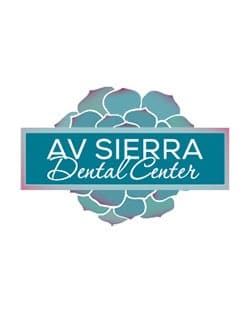
Mistletoe has been hung, setting blissful, kissing booby traps for the unsuspecting, and when the ball drops, lips will lock everywhere. During the month of December, your oral health and hygiene needs to be on point! Brushing and rinsing twice a day, as well as daily flossing, helps keep your mouth healthy but doesn’t necessarily ensure fresh breath that will last all day long. And during a season hallmarked by the unexpected, one does not want to be caught face-to-face suffering from a bad case of halitosis. So what can you do to improve your chances of being 100% smoochable should the opportunity arise? Read on for breath-saving tips that are sure to improve your chances of ringing in the New Year with more than a smile on your lips. Food for Thought When you eat, food is absorbed into your bloodstream and expelled out of your lungs when you breathe. This means that you may suffer from bad breath even when your diet is healthy and balanced. The following foods are notorious for turning breath foul, so ingest them sparingly or at least with extreme caution. Garlic: This powerful herb can turn a bland dish into a delectable culinary work of art. Its versatility allows it to be used in a variety of cuisines and eaten or used for cooking whole, crushed, chopped, or dried and powdered. Garlic is also renowned for its health benefits and its ability to ward off vampires. While it does all of these amazing things, its major drawback is its ability to turn the odor of your breath into a scent so repellant that even the most determined admirer would have great difficulty overcoming their repulsion long enough to plant a wet one on you. Also note: If eaten regularly and in large quantities, it can affect your body odor negatively as well. Onion: While onion is not as powerful as garlic, its fellow odoriferous bulb, this herb is commonly used to enhance the flavor of a large range of dishes. It is often served raw in salads, added to soups and other savory dishes, and comes in a large variety of types and flavors. The types of onion include brown onions, green onions, leeks, pearl onions, shallots, and more, and while they are all very different in appearance, texture, and flavor, they all have one thing in common: They make your breath stink. Coffee: Too much coffee gives you bad breath. It’s a hard truth to face, especially since dates at coffee shops are where many love stories begin. Coffee is wonderful at delivering a warm wake-up call each morning and nurturing its consumer into a state of alertness that allows them to take on the day. While this is a deeply appreciated trait, what few people realize is that it’s also one of the most dehydrating drinks you can consume. We aren’t suggesting that you quit coffee for good, but if you want the confidence that comes with fresh breath, you should limit your consumption to a cup a day. Alcohol: Don’t give up your Champagne toast at midnight on New Year’s Eve, but do watch your overall consumption of alcoholic beverages. That beer you look forward to at the end of each day and that weekly happy-hour cocktail you consume with your co-workers is drying out your mouth. When your saliva flow runs low, bad-smelling bacteria sticks around and turns breath bad. Battle Bad Breath There are a variety of simple ways you can actively ward off and battle bad breath on a daily basis. Stay hydrated: Drink water all day long. It washes away leftover food particles and the bacteria that can lead to decay, and it helps you avoid dry mouth. Aim for six to eight 8-ounce glasses of water a day. Clean your tongue: Residual buildup between your taste buds and the fold in your tongue can affect your breath negatively. Keep your tongue clean by brushing it regularly. You can also find very effective tongue scrapers at most drugstores. Chew gum: Sugarless gum with xylitol keeps your breath fresh while cleaning your teeth. Gum stimulates the flow of saliva, which washes unwanted debris from your teeth. Snack on this: Crisp, fresh fruits and vegetables turn on the flow of saliva and decrease the occurrence of bad breath caused by hunger. When you become hungry, especially when you are on calorie-restricted diets, the acids in your stomach build up and give your breath a nasty scent. Eat your garnish: Parsley is a popular garnish on many of the dishes served in restaurants. Most people think the only purpose it serves is to pretty up your plate. But parsley contains chlorophyll, which is a powerful breath and post-meal romance saver. If you want to feel completely confident this holiday season, give your Palmdale dentist office a call at 661.202.3542 to set up a cleaning. We will make sure your smile is New Year’s Eve ready, so you can enjoy kissing this year goodbye.
